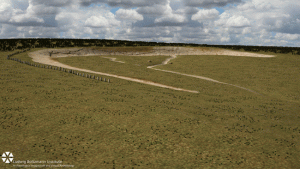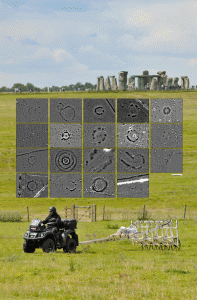Stonehenge Researchers Discover A Much Larger Super-Henge

The remains of a major prehistoric stone monument, or super-henge, has been discovered less than 1.8 miles or 3 km from the well known Stonehenge. The Stonehenge Hidden Landscapes Project found the large stone monument using non-invasive geophysical prospection and remote sensing technologies. The row of up to 90 standing stones, some of which may have originally measured up to 4.5 meters, were hidden beneath the bank of the Durrington Walls ‘super-henge’ that was discovered between 2004 – 2006. However, this super-henge is even larger than the Durrington Walls. This new discovery is significant and adds to our understanding of early architecture. Comments from the study:
The earthwork enclosure at Durrington Walls was built about a century after the Stonehenge sarsen circle (in the 27th century BC), but the new stone row could well be contemporary with or earlier than this. Not only does this new evidence demonstrate an early phase of monumental architecture at one of the greatest ceremonial sites in prehistoric Europe, it also raises significant questions about the landscape the builders of Stonehenge inhabited and how they changed this with new monument-building during the 3rd millennium BC.

The Stonehenge Hidden Landscapes Project is an international collaboration between the University of Birmingham and the Ludwig Boltzmann Institute for Archaeological Prospection and Virtual Archaeology (LBI ArchPro) and led by Professor Wolfgang Neubauer and Professor Vincent Gaffney (University of Bradford). If you’d like to read more of the study, check it out here.
